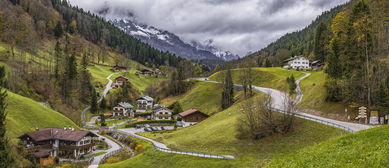In the vast world of coffee, there's something particularly captivating about Vietnamese coffee culture. Vietnam is not only one of the largest producers of coffee in the world, but it also boasts a rich and distinctive way of preparing and enjoying coffee that has captured the hearts of coffee aficionados across the globe.
The Unique Appeal of Vietnamese Coffee
Vietnamese coffee is known for its strong and bold flavor, thanks to its unique production methods and the choice of beans. The traditional method involves brewing the coffee slowly through a drip filter into a cup or pot of sweetened condensed milk. This combination creates a velvety texture and a rich, creamy taste that contrasts with the robust bitterness of the coffee. This style of preparation is called "cà phê sữa đá" or "ca phe sua da" when served over ice, and "cà phê sữa nóng" or "ca phe sua nong" when served hot, reflecting the preference for cold drinks during the humid heat of Vietnam's tropical climate.
The Journey from Bean to Cup
The journey of Vietnamese coffee begins in the mountainous regions of the country, primarily in provinces like Dak Lak, Gia Lai, and Lam Dong. These areas have ideal conditions for growing high-quality Arabica beans, which are typically sweeter and more delicate than their Robusta counterparts. The Arabica beans from these regions are often characterized by hints of chocolate, caramel, and sometimes even floral notes, making them highly sought after for specialty coffee.
Robusta beans, which are more common in Vietnamese coffee, are grown at lower altitudes and have a higher caffeine content. They are known for their strong, bitter taste and are used in the blend that gives cà phê sữa đá its signature flavor.
The Cultivation and Harvesting Process
Growing coffee in Vietnam is no small feat. The country's diverse landscapes, ranging from lush rainforests to arid highlands, present both challenges and opportunities for coffee cultivation. The farmers here face issues such as climate change and unpredictable weather patterns, but they've developed innovative techniques to sustainably grow and harvest their crops.

Harvesting is done manually, ensuring the quality of each bean. This labor-intensive process involves selecting only the ripest cherries from the coffee plants, as this ensures the best possible flavor profile. Once harvested, the beans undergo various processing methods to remove the outer layers of fruit and reveal the green coffee beans beneath.
The Art of Roasting
After harvesting, the coffee beans undergo a meticulous roasting process. Vietnamese roasters often use traditional charcoal-roasted methods, which lend a unique smoky aroma and flavor to the beans. This roasting technique also allows for greater control over the final flavor, as the roaster can adjust the temperature and duration based on personal preference.
The Brewing Method
When it comes to brewing, the Vietnamese drip method is the heart and soul of their coffee culture. A small metal filter called a "phin" is placed atop a glass or cup filled with sweetened condensed milk. Ground coffee is added to the phin, and hot water is poured over it, dripping slowly through the filter into the cup below. This slow-drip method ensures a full extraction of flavors, resulting in a rich, flavorful brew.
Vietnamese Coffee Culture Today
Vietnamese coffee culture extends far beyond just the act of drinking coffee; it’s an integral part of daily life and social interactions. Cafés dot the streets of every city, offering a place for friends and families to gather, discuss life, and simply enjoy a moment of relaxation.
In recent years, there has been a growing trend towards specialty Vietnamese coffee shops that emphasize sustainable practices, artisanal techniques, and the importance of fair trade. These cafes serve as a bridge between traditional coffee culture and modern tastes, ensuring that the legacy of Vietnamese coffee is preserved and celebrated for generations to come.
Conclusion
Vietnamese coffee is more than just a beverage—it's a way of life that reflects the resilience and creativity of the Vietnamese people. From the meticulous care taken in cultivation and harvesting to the intricate art of roasting and brewing, every step in the journey of Vietnamese coffee is imbued with passion and tradition. As you sip your next cup of cà phê sữa, take a moment to appreciate the rich tapestry of flavors and the story behind each drop.
1、https://en.wikipedia.org/wiki/Vietnamese_coffee
2、https://www.vinacafe.vn/en/About-Vietnamese-Coffee
Đến với cà phê Việt Nam - một văn hóa phong phú và độc đáo:
Cà phê Việt Nam nổi tiếng với hương vị mạnh mẽ và sâu sắc, nhờ vào phương pháp sản xuất và loại hạt cà phê đặc trưng. Phương pháp truyền thống bao gồm việc nấu chậm cà phê qua bộ lọc rót xuống một cốc hoặc bình chứa sữa đặc đường. Sự kết hợp này tạo ra một kết cấu béo ngậy và một hương vị đậm đà, cân bằng giữa sự mạnh mẽ của cà phê và sự ngọt ngào của sữa đặc đường.
Voyageur qua quy trình từ hạt đến cốc:
Hành trình của cà phê Việt Nam bắt đầu tại các vùng núi miền trung và nam Việt Nam, chủ yếu là ở các tỉnh như Đắk Lắk, Gia Lai và Lâm Đồng. Các vùng đất này có điều kiện lý tưởng để trồng hạt cà phê Arabica chất lượng cao, thường mang hương vị ngọt ngào và nhẹ nhàng hơn so với hạt cà phê Robusta.
Phương pháp nấu cà phê của người Việt cũng là một nghệ thuật: bộ lọc nhỏ làm bằng kim loại gọi là "phin" được đặt trên một cốc hoặc bình chứa sữa đặc đường. Hạt cà phê được thêm vào bộ lọc, nước nóng được đổ lên trên, và sau đó nó sẽ nhỏ giọt chậm rãi qua bộ lọc vào cốc dưới. Phương pháp chậm nhỏ giọt này đảm bảo quá trình trích xuất toàn diện, tạo nên một tách cà phê đậm đà và đầy hương vị.
Chúng ta đang thấy một xu hướng ngày càng tăng của các quán cà phê Việt Nam chuyên nghiệp, tập trung vào thực hành bền vững, kỹ thuật thủ công và tầm quan trọng của thương mại công bằng.









